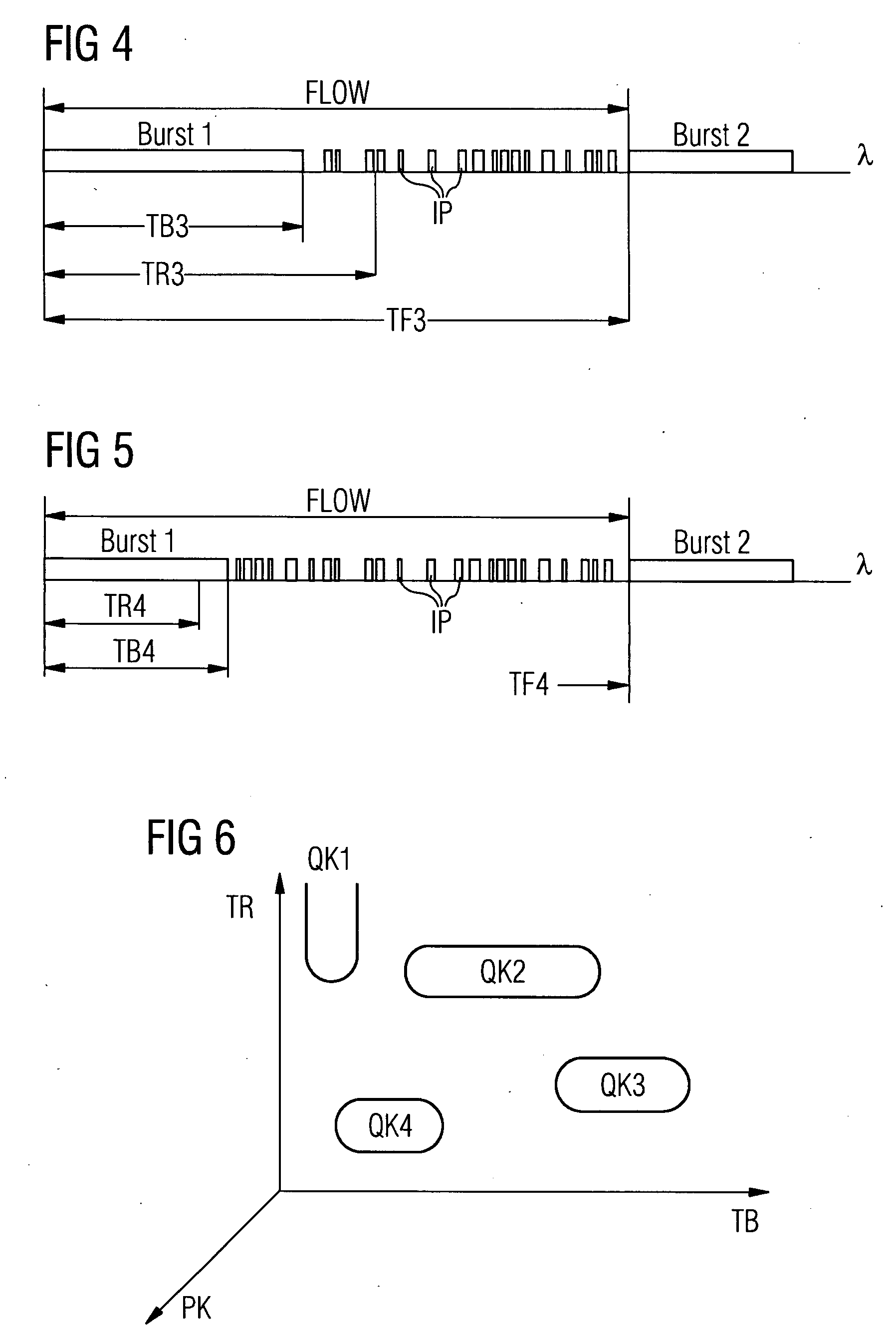Method for Transferring Data Packets
- Summary
- Abstract
- Description
- Claims
- Application Information
AI Technical Summary
Benefits of technology
Problems solved by technology
Method used
Image
Examples
Embodiment Construction
[0025]In FIG. 1, a transmission network with multiple network nodes NK1 to NK5 is shown. From subscribers who are connected at any one time to a network node NK1, data is transmitted in the form of data packets (IP packets) to the network node, combined there into data bursts, and then transmitted to a target network node, e.g. network node NK3. For simplicity, it is assumed that the data of all subscribers who are connected to network node NK1 is to be transmitted in the same quality class.
[0026]FIG. 2 shows the transmission of the data packets IP from network node NK1 in the highest (first) quality class QK1 (FIG. 6). Practically a complete transmission channel is reserved for the transmission, so that all data packets IP are sent on from network node NK1 directly, without previously being combined into data bursts. The transmission FLOW is ended only when the sending network node NK1 so determines.
[0027]In the case of multiple transmissions in the highest quality class, an attemp...
PUM
 Login to View More
Login to View More Abstract
Description
Claims
Application Information
 Login to View More
Login to View More - R&D
- Intellectual Property
- Life Sciences
- Materials
- Tech Scout
- Unparalleled Data Quality
- Higher Quality Content
- 60% Fewer Hallucinations
Browse by: Latest US Patents, China's latest patents, Technical Efficacy Thesaurus, Application Domain, Technology Topic, Popular Technical Reports.
© 2025 PatSnap. All rights reserved.Legal|Privacy policy|Modern Slavery Act Transparency Statement|Sitemap|About US| Contact US: help@patsnap.com



